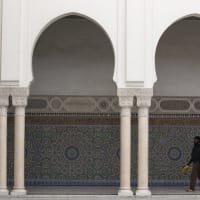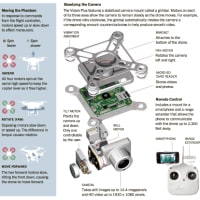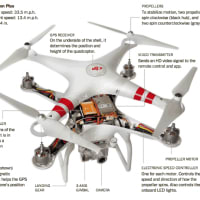The Tweaker
The real genius of Steve Jobs.
「ザ・凝り性」 スティーブ・ジョブスの真骨頂
by Malcolm Gladwell November 14, 2011
確かにスティーブ・ジョブスが発明したわけではないが、彼のこだわりからしか生まれなかったのも事実だ。どちらにしても、そこまで拘る人間はやはり尋常の域を超えている。むしろ欠点は人間臭さを感じさせて私は安心したりしている。

Jobs’s sensibility was more editorial than inventive. “I’ll know it when I see it,” he said.
ジョブスの感受性鋭さは発明的というより編集的なものだ。「私はそれをみてすぐに悟った。」と彼は言った。
Not long after Steve Jobs got married, in 1991, he moved with his wife to a nineteen-thirties, Cotswolds-style house in old Palo Alto. Jobs always found it difficult to furnish the places where he lived. His previous house had only a mattress, a table, and chairs. He needed things to be perfect, and it took time to figure out what perfect was. This time, he had a wife and family in tow, but it made little difference. “We spoke about furniture in theory for eight years,” his wife, Laurene Powell, tells Walter Isaacson, in “Steve Jobs,” Isaacson’s enthralling new biography of the Apple founder. “We spent a lot of time asking ourselves, ‘What is the purpose of a sofa?’ ”
スティーブジョブスは1991年に結婚してさほど経たないころ、彼は、パルアルトの旧市街にある1930年代のコッツウォルズスタイルの家に妻と引っ越した。 ジョブスは、いつも住む場所の家具の選定と設置に悩んでいた。彼の以前の家にはマット、手ブルそして椅子があるだけだった。彼は完全な家具を揃えたかったが、その完全を追求するのに時間がかかった。今回は、妻と子供が二人いるが、それは大した違いではなかった。 「私達は家具について、理論的にいえば8年間も話してきたことになるわ。 私達は「ソファの本来の目的はなんだろう?など自問自答するのに随分時間を使ったわ。」と彼の妻である、ローレン・パウエルはウォルター・アイザックソンに、アップル創業者の新しい魅力的な伝記である彼の著書「スティーブジョブス」のなかで話している。
It was the choice of a washing machine, however, that proved most vexing. European washing machines, Jobs discovered, used less detergent and less water than their American counterparts, and were easier on the clothes. But they took twice as long to complete a washing cycle. What should the family do? As Jobs explained, “We spent some time in our family talking about what’s the trade-off we want to make. We ended up talking a lot about design, but also about the values of our family. Did we care most about getting our wash done in an hour versus an hour and a half? Or did we care most about our clothes feeling really soft and lasting longer? Did we care about using a quarter of the water? We spent about two weeks talking about this every night at the dinner table.”
それは単なる洗濯機の選定だったが、とても頭の痛い問題だった。ヨーロッパスタイルの洗濯機はアメリカのよりも、洗剤も水も少なくて済むし、生地にも優しいということがジョブスには分ったが、洗濯の全工程を終えるのに倍の時間がかかった。 さて家族はどちらにするか? ジョブスは説明する「我々は、家族で、何を犠牲にして、どちらをとるかについて暫らく話しました。そして揚句にデザインについても沢山話し合ったけど、家族の価値観についても話し合ったね。 1時間で洗濯を終えるか、1時間半かけても構わないか? 水を4分の1しか使わないことに拘るのか? 夕食時に2週間くらい、毎晩話し合ったよ。」
Steve Jobs, Isaacson’s biography makes clear, was a complicated and exhausting man. “There are parts of his life and personality that are extremely messy, and that’s the truth,” Powell tells Isaacson. “You shouldn’t whitewash it.” Isaacson, to his credit, does not. He talks to everyone in Jobs’s career, meticulously recording conversations and encounters dating back twenty and thirty years. Jobs, we learn, was a bully. “He had the uncanny capacity to know exactly what your weak point is, know what will make you feel small, to make you cringe,” a friend of his tells Isaacson. Jobs gets his girlfriend pregnant, and then denies that the child is his. He parks in handicapped spaces. He screams at subordinates. He cries like a small child when he does not get his way. He gets stopped for driving a hundred miles an hour, honks angrily at the officer for taking too long to write up the ticket, and then resumes his journey at a hundred miles an hour. He sits in a restaurant and sends his food back three times.
アイザックソンの伝記は、スティーブジョブスが、ややこしくて疲れる男だということを明記している。「彼の人生と人格の中には極端に面倒な部分があるの、それは本当だわ。 でもそれを美化しないでね。」とパウエルはアイザックソンに頼んでいる。そしてアイザックソンは立派にそれを守っている。彼はジョブスの経歴の中で、あらゆる人に取材し、20~30年に遡って、その会話や出会いを詳細に記録している。したがって、ジョブスが意地悪なのも我々は知ることになる。 「彼には不思議な能力があって、相手の弱点を正確に見つけたり、何が自尊心を失わせるかを見抜いて、相手を委縮させることができるんだ。」とジョブスの友人はアイザックソンに話している。 ジョブスは彼女を妊娠させたうえ、子供の認知を拒んでいる。彼は身障者用の駐車スペースに車を止めたこともある。部下を怒鳴りつけるし、うまく行かないときは子供の用に泣く。 彼は時速100マイル(160㎞)で運転し、警察に捕まり違反切符を切るのに時間がかかるとクラクションを苛立たしく鳴らし、またすぐに100マイルで運転し始める。彼はレストランに行き、オーダーを3回も突き返したりもする。
He arrives at his hotel suite in New York for press interviews and decides, at 10 P.M., that the piano needs to be repositioned, the strawberries are inadequate, and the flowers are all wrong: he wanted calla lilies. (When his public-relations assistant returns, at midnight, with the right flowers, he tells her that her suit is “disgusting.”) “Machines and robots were painted and repainted as he compulsively revised his color scheme,” Isaacson writes, of the factory Jobs built, after founding NeXT, in the late nineteen-eighties. “The walls were museum white, as they had been at the Macintosh factory, and there were $20,000 black leather chairs and a custom-made staircase. . . . He insisted that the machinery on the 165-foot assembly line be configured to move the circuit boards from right to left as they got built, so that the process would look better to visitors who watched from the viewing gallery.”
彼が、記者のインタビューを受けるためにニューヨークのホテルのスィートに着くと、夜の10時だというのに、ピアノの位置を変えろ、イチゴが足りない、花が良くないと言いだす。彼はカラーの反が好きだった。(そこで彼の広報担当助手が夜中に望みの花をもって戻ってくると、ジョブスは彼女に向って、このスィートは最低だと言っている。)「工場の機会やロボットは色を塗り、また塗り替えられた、なぜならジョブスが無理やり配色を変えたからだ。」とアイザックソンは書いている。それは1980年代の、ネクスト社を創業してジョブスが工場を建てたときの話である。 「壁はマッキントッシュの工場にあった、博物館の白に拘り、2万ドルもかけてレザーの椅子を置き、階段は特注・・・・おまけに、設備が入ったあとで、ジョブスは165フィート(約50m)の組み立てラインの機械を、配電盤を右から左に移すから合わせろと言いだした。その方が工場訪問者が見学路から良く見えるというのである。」とアイザックソンは書いている。
Isaacson begins with Jobs’s humble origins in Silicon Valley, the early triumph at Apple, and the humiliating ouster from the firm he created. He then charts the even greater triumphs at Pixar and at a resurgent Apple, when Jobs returns, in the late nineteen-nineties, and our natural expectation is that Jobs will emerge wiser and gentler from his tumultuous journey. He never does. In the hospital at the end of his life, he runs through sixty-seven nurses before he finds three he likes. “At one point, the pulmonologist tried to put a mask over his face when he was deeply sedated,” Isaacson writes: Jobs ripped it off and mumbled that he hated the design and refused to wear it. Though barely able to speak, he ordered them to bring five different options for the mask and he would pick a design he liked. . . . He also hated the oxygen monitor they put on his finger. He told them it was ugly and too complex.
アイザックソンはシリコンバレー時代の貧しい時代から、アップルでの早い成功そして、その自分が創業したアップル社からの恥辱に塗れた追放劇と書き起こし、ピクサスでの更に大きな成功へ、そして1990年代末のジョブスの復帰によるアップルの復活へと書き進める。そこで我々は当然、これらの激動の人生遍歴を通じて、より賢く円熟したジョブスの登場を期待することになる。 だが、彼は決して変わらない。 人生の終末期の病院に於いてさえ、彼は好みの看護師を決めるのに67人の候補に目を通している。「呼吸器科医が、深く鎮静状態にあるジョブスの顔に酸素マスクを着けようとしたとき」とアイザックソンはこう書いている、 ジョブスはマスクを剥ぎ取り、そのデザインが嫌だと呟いき装着を拒否した。 殆ど喋れない状況で、彼は5つのマスクから気に入ったのを選んだ・・・彼は指に着けた血中酸素モニターを嫌って、こう言った、形が悪いし、おまけに複雑だ。
One of the great puzzles of the industrial revolution is why it began in England. Why not France, or Germany? Many reasons have been offered. Britain had plentiful supplies of coal, for instance. It had a good patent system in place. It had relatively high labor costs, which encouraged the search for labor-saving innovations. In an article published earlier this year, however, the economists Ralf Meisenzahl and Joel Mokyr focus on a different explanation: the role of Britain’s human-capital advantage—in particular, on a group they call “tweakers.” They believe that Britain dominated the industrial revolution because it had a far larger population of skilled engineers and artisans than its competitors: resourceful and creative men who took the signature inventions of the industrial age and tweaked them—refined and perfected them, and made them work.
産業革命の大きな謎の一つに、産業革命がなぜイギリスで興ったのかというのがある。なぜフランスやドイツでなく? 多くの理由付けがなされている。 曰く、イギリスには石炭が豊富だったとか、良い特許のシステムがそこにあったとか、比較的高い労賃が、労働力を節約する技術革新に向かわせたと言う説まである。 しかしながら、今年の年初に出版された記事のなかで、エコノミストのラルフ・マイセンザールとジョエル・モーカーはちょっと違った理由に着目した。 つまり英国の人的資源の優位性が担った役割である、特に「凝り性職人」と呼ばれた人達の集団である。 この二人のエコノミストは英国が産業革命で圧倒的な地位を占め得たのは、その他の国に比して遥かに多くの熟練技術者と職人を擁していたからだとみている。つまり、豊かな資質と創造性を持った人たちが産業化の時代の特徴ある発明をし、それらを凝りに凝ったのである・・・洗練し、完璧を追求し、そしてそれを機能させたのである。
In 1779, Samuel Crompton, a retiring genius from Lancashire, invented the spinning mule, which made possible the mechanization of cotton manufacture. Yet England’s real advantage was that it had Henry Stones, of Horwich, who added metal rollers to the mule; and James Hargreaves, of Tottington, who figured out how to smooth the acceleration and deceleration of the spinning wheel; and William Kelly, of Glasgow, who worked out how to add water power to the draw stroke; and John Kennedy, of Manchester, who adapted the wheel to turn out fine counts; and, finally, Richard Roberts, also of Manchester, a master of precision machine tooling—and the tweaker’s tweaker. He created the “automatic” spinning mule: an exacting, high-speed, reliable rethinking of Crompton’s original creation. Such men, the economists argue, provided the “micro inventions necessary to make macro inventions highly productive and remunerative.”
1779年に、ランカシャーの退職した天才サミュエル・クロンプトンがミュール紡織機を発明し、綿工業の機械化を実現した。 イギリスの本当の強みはそれだけに止まらなかった。 ホリッジのヘンリー・ストーンは紡織機に金属のローラーを加え、トッチントンのジェームス・ハーグリーブスは紡織機の紡ぎ車の加速と減速をスムーズにする方法を編み出し、グラスゴーのウィリアム・ケリーはピストンのストロークを水力にし、マンチェスターのジョン・ケネディは紡ぎ車を細い番手の糸に応用し、同じくマンチェスターのリチャード・ロバーツは精密な機械の据え付けに優れ・・・凝り性の中の凝り性だった。彼は所謂”自動“ミュール紡織機を創り出した。つまり当初のクロンプトンの紡織機が正確で、高速で、信頼性のあるものになったのである。 つまり、これらの人々が小さな発明を積上げて大きな発明に繋げて高生産性と高利益性を生み出したことになる。
Was Steve Jobs a Samuel Crompton or was he a Richard Roberts? In the eulogies that followed Jobs’s death, last month, he was repeatedly referred to as a large-scale visionary and inventor. But Isaacson’s biography suggests that he was much more of a tweaker. He borrowed the characteristic features of the Macintosh—the mouse and the icons on the screen—from the engineers at Xerox PARC, after his famous visit there, in 1979. The first portable digital music players came out in 1996. Apple introduced the iPod, in 2001, because Jobs looked at the existing music players on the market and concluded that they “truly sucked.” Smart phones started coming out in the nineteen-nineties. Jobs introduced the iPhone in 2007, more than a decade later, because, Isaacson writes, “he had noticed something odd about the cell phones on the market: They all stank, just like portable music players used to.” The idea for the iPad came from an engineer at Microsoft, who was married to a friend of the Jobs family, and who invited Jobs to his fiftieth-birthday party. As Jobs tells Isaacson:
スティーブジョブスはサミュエル・クロンプトンだったのだろうか? はたまたリチャード・ロバーツなのか?ジョブスの死後の彼へ称賛のなかで、彼は繰り返し、大きなスケールの先見性を持つ人、発明家として言及されてきた。 しかし、アイザックソンの伝記の中では、彼はもっぱら凝り性の人(おたく)という意味合いで書かれている。 彼はマッキントッシュの独特の特徴である、そのマウスとスクリーン上のアイコンを、1979年の彼の良く知られているゼロックス社訪問の後、ゼロックスのPARCの技術者から、その知恵を拝借した。 最初のポータブルのデジタルミュージックプレイヤーは1996年には世に出ていた。アップルがアイポッドを発売したのは2001年になってからで、なぜならジョブスが市場に出ている既存のミュージックプレイヤーを見て、“本当にダメだ”と思ったからだ。 スマートフォンは既に1990年代に出てきた。 ジョブスはアイフォーンを2007年にリリースしている、10年以上後になってである。「なぜなら、彼は市場の携帯の何か不具合なところに気付いたからだ」と、アイザックソンは書いている。 「それらは全てお粗末で、それまでのポータブル・ミュージックプレイヤーとなんら変わりがなかった。」 アイパッドのアイデアはマイクロソフトのエンジニアのものだった、彼はジョブス一家の友人と結婚し、ジョブスを彼の50歳の誕生パーティに招待している。 ジョブスはそうアイザックソンに話している。 (つづく)
The real genius of Steve Jobs.
「ザ・凝り性」 スティーブ・ジョブスの真骨頂
by Malcolm Gladwell November 14, 2011
確かにスティーブ・ジョブスが発明したわけではないが、彼のこだわりからしか生まれなかったのも事実だ。どちらにしても、そこまで拘る人間はやはり尋常の域を超えている。むしろ欠点は人間臭さを感じさせて私は安心したりしている。

Jobs’s sensibility was more editorial than inventive. “I’ll know it when I see it,” he said.
ジョブスの感受性鋭さは発明的というより編集的なものだ。「私はそれをみてすぐに悟った。」と彼は言った。
Not long after Steve Jobs got married, in 1991, he moved with his wife to a nineteen-thirties, Cotswolds-style house in old Palo Alto. Jobs always found it difficult to furnish the places where he lived. His previous house had only a mattress, a table, and chairs. He needed things to be perfect, and it took time to figure out what perfect was. This time, he had a wife and family in tow, but it made little difference. “We spoke about furniture in theory for eight years,” his wife, Laurene Powell, tells Walter Isaacson, in “Steve Jobs,” Isaacson’s enthralling new biography of the Apple founder. “We spent a lot of time asking ourselves, ‘What is the purpose of a sofa?’ ”
スティーブジョブスは1991年に結婚してさほど経たないころ、彼は、パルアルトの旧市街にある1930年代のコッツウォルズスタイルの家に妻と引っ越した。 ジョブスは、いつも住む場所の家具の選定と設置に悩んでいた。彼の以前の家にはマット、手ブルそして椅子があるだけだった。彼は完全な家具を揃えたかったが、その完全を追求するのに時間がかかった。今回は、妻と子供が二人いるが、それは大した違いではなかった。 「私達は家具について、理論的にいえば8年間も話してきたことになるわ。 私達は「ソファの本来の目的はなんだろう?など自問自答するのに随分時間を使ったわ。」と彼の妻である、ローレン・パウエルはウォルター・アイザックソンに、アップル創業者の新しい魅力的な伝記である彼の著書「スティーブジョブス」のなかで話している。
It was the choice of a washing machine, however, that proved most vexing. European washing machines, Jobs discovered, used less detergent and less water than their American counterparts, and were easier on the clothes. But they took twice as long to complete a washing cycle. What should the family do? As Jobs explained, “We spent some time in our family talking about what’s the trade-off we want to make. We ended up talking a lot about design, but also about the values of our family. Did we care most about getting our wash done in an hour versus an hour and a half? Or did we care most about our clothes feeling really soft and lasting longer? Did we care about using a quarter of the water? We spent about two weeks talking about this every night at the dinner table.”
それは単なる洗濯機の選定だったが、とても頭の痛い問題だった。ヨーロッパスタイルの洗濯機はアメリカのよりも、洗剤も水も少なくて済むし、生地にも優しいということがジョブスには分ったが、洗濯の全工程を終えるのに倍の時間がかかった。 さて家族はどちらにするか? ジョブスは説明する「我々は、家族で、何を犠牲にして、どちらをとるかについて暫らく話しました。そして揚句にデザインについても沢山話し合ったけど、家族の価値観についても話し合ったね。 1時間で洗濯を終えるか、1時間半かけても構わないか? 水を4分の1しか使わないことに拘るのか? 夕食時に2週間くらい、毎晩話し合ったよ。」
Steve Jobs, Isaacson’s biography makes clear, was a complicated and exhausting man. “There are parts of his life and personality that are extremely messy, and that’s the truth,” Powell tells Isaacson. “You shouldn’t whitewash it.” Isaacson, to his credit, does not. He talks to everyone in Jobs’s career, meticulously recording conversations and encounters dating back twenty and thirty years. Jobs, we learn, was a bully. “He had the uncanny capacity to know exactly what your weak point is, know what will make you feel small, to make you cringe,” a friend of his tells Isaacson. Jobs gets his girlfriend pregnant, and then denies that the child is his. He parks in handicapped spaces. He screams at subordinates. He cries like a small child when he does not get his way. He gets stopped for driving a hundred miles an hour, honks angrily at the officer for taking too long to write up the ticket, and then resumes his journey at a hundred miles an hour. He sits in a restaurant and sends his food back three times.
アイザックソンの伝記は、スティーブジョブスが、ややこしくて疲れる男だということを明記している。「彼の人生と人格の中には極端に面倒な部分があるの、それは本当だわ。 でもそれを美化しないでね。」とパウエルはアイザックソンに頼んでいる。そしてアイザックソンは立派にそれを守っている。彼はジョブスの経歴の中で、あらゆる人に取材し、20~30年に遡って、その会話や出会いを詳細に記録している。したがって、ジョブスが意地悪なのも我々は知ることになる。 「彼には不思議な能力があって、相手の弱点を正確に見つけたり、何が自尊心を失わせるかを見抜いて、相手を委縮させることができるんだ。」とジョブスの友人はアイザックソンに話している。 ジョブスは彼女を妊娠させたうえ、子供の認知を拒んでいる。彼は身障者用の駐車スペースに車を止めたこともある。部下を怒鳴りつけるし、うまく行かないときは子供の用に泣く。 彼は時速100マイル(160㎞)で運転し、警察に捕まり違反切符を切るのに時間がかかるとクラクションを苛立たしく鳴らし、またすぐに100マイルで運転し始める。彼はレストランに行き、オーダーを3回も突き返したりもする。
He arrives at his hotel suite in New York for press interviews and decides, at 10 P.M., that the piano needs to be repositioned, the strawberries are inadequate, and the flowers are all wrong: he wanted calla lilies. (When his public-relations assistant returns, at midnight, with the right flowers, he tells her that her suit is “disgusting.”) “Machines and robots were painted and repainted as he compulsively revised his color scheme,” Isaacson writes, of the factory Jobs built, after founding NeXT, in the late nineteen-eighties. “The walls were museum white, as they had been at the Macintosh factory, and there were $20,000 black leather chairs and a custom-made staircase. . . . He insisted that the machinery on the 165-foot assembly line be configured to move the circuit boards from right to left as they got built, so that the process would look better to visitors who watched from the viewing gallery.”
彼が、記者のインタビューを受けるためにニューヨークのホテルのスィートに着くと、夜の10時だというのに、ピアノの位置を変えろ、イチゴが足りない、花が良くないと言いだす。彼はカラーの反が好きだった。(そこで彼の広報担当助手が夜中に望みの花をもって戻ってくると、ジョブスは彼女に向って、このスィートは最低だと言っている。)「工場の機会やロボットは色を塗り、また塗り替えられた、なぜならジョブスが無理やり配色を変えたからだ。」とアイザックソンは書いている。それは1980年代の、ネクスト社を創業してジョブスが工場を建てたときの話である。 「壁はマッキントッシュの工場にあった、博物館の白に拘り、2万ドルもかけてレザーの椅子を置き、階段は特注・・・・おまけに、設備が入ったあとで、ジョブスは165フィート(約50m)の組み立てラインの機械を、配電盤を右から左に移すから合わせろと言いだした。その方が工場訪問者が見学路から良く見えるというのである。」とアイザックソンは書いている。
Isaacson begins with Jobs’s humble origins in Silicon Valley, the early triumph at Apple, and the humiliating ouster from the firm he created. He then charts the even greater triumphs at Pixar and at a resurgent Apple, when Jobs returns, in the late nineteen-nineties, and our natural expectation is that Jobs will emerge wiser and gentler from his tumultuous journey. He never does. In the hospital at the end of his life, he runs through sixty-seven nurses before he finds three he likes. “At one point, the pulmonologist tried to put a mask over his face when he was deeply sedated,” Isaacson writes: Jobs ripped it off and mumbled that he hated the design and refused to wear it. Though barely able to speak, he ordered them to bring five different options for the mask and he would pick a design he liked. . . . He also hated the oxygen monitor they put on his finger. He told them it was ugly and too complex.
アイザックソンはシリコンバレー時代の貧しい時代から、アップルでの早い成功そして、その自分が創業したアップル社からの恥辱に塗れた追放劇と書き起こし、ピクサスでの更に大きな成功へ、そして1990年代末のジョブスの復帰によるアップルの復活へと書き進める。そこで我々は当然、これらの激動の人生遍歴を通じて、より賢く円熟したジョブスの登場を期待することになる。 だが、彼は決して変わらない。 人生の終末期の病院に於いてさえ、彼は好みの看護師を決めるのに67人の候補に目を通している。「呼吸器科医が、深く鎮静状態にあるジョブスの顔に酸素マスクを着けようとしたとき」とアイザックソンはこう書いている、 ジョブスはマスクを剥ぎ取り、そのデザインが嫌だと呟いき装着を拒否した。 殆ど喋れない状況で、彼は5つのマスクから気に入ったのを選んだ・・・彼は指に着けた血中酸素モニターを嫌って、こう言った、形が悪いし、おまけに複雑だ。
One of the great puzzles of the industrial revolution is why it began in England. Why not France, or Germany? Many reasons have been offered. Britain had plentiful supplies of coal, for instance. It had a good patent system in place. It had relatively high labor costs, which encouraged the search for labor-saving innovations. In an article published earlier this year, however, the economists Ralf Meisenzahl and Joel Mokyr focus on a different explanation: the role of Britain’s human-capital advantage—in particular, on a group they call “tweakers.” They believe that Britain dominated the industrial revolution because it had a far larger population of skilled engineers and artisans than its competitors: resourceful and creative men who took the signature inventions of the industrial age and tweaked them—refined and perfected them, and made them work.
産業革命の大きな謎の一つに、産業革命がなぜイギリスで興ったのかというのがある。なぜフランスやドイツでなく? 多くの理由付けがなされている。 曰く、イギリスには石炭が豊富だったとか、良い特許のシステムがそこにあったとか、比較的高い労賃が、労働力を節約する技術革新に向かわせたと言う説まである。 しかしながら、今年の年初に出版された記事のなかで、エコノミストのラルフ・マイセンザールとジョエル・モーカーはちょっと違った理由に着目した。 つまり英国の人的資源の優位性が担った役割である、特に「凝り性職人」と呼ばれた人達の集団である。 この二人のエコノミストは英国が産業革命で圧倒的な地位を占め得たのは、その他の国に比して遥かに多くの熟練技術者と職人を擁していたからだとみている。つまり、豊かな資質と創造性を持った人たちが産業化の時代の特徴ある発明をし、それらを凝りに凝ったのである・・・洗練し、完璧を追求し、そしてそれを機能させたのである。
In 1779, Samuel Crompton, a retiring genius from Lancashire, invented the spinning mule, which made possible the mechanization of cotton manufacture. Yet England’s real advantage was that it had Henry Stones, of Horwich, who added metal rollers to the mule; and James Hargreaves, of Tottington, who figured out how to smooth the acceleration and deceleration of the spinning wheel; and William Kelly, of Glasgow, who worked out how to add water power to the draw stroke; and John Kennedy, of Manchester, who adapted the wheel to turn out fine counts; and, finally, Richard Roberts, also of Manchester, a master of precision machine tooling—and the tweaker’s tweaker. He created the “automatic” spinning mule: an exacting, high-speed, reliable rethinking of Crompton’s original creation. Such men, the economists argue, provided the “micro inventions necessary to make macro inventions highly productive and remunerative.”
1779年に、ランカシャーの退職した天才サミュエル・クロンプトンがミュール紡織機を発明し、綿工業の機械化を実現した。 イギリスの本当の強みはそれだけに止まらなかった。 ホリッジのヘンリー・ストーンは紡織機に金属のローラーを加え、トッチントンのジェームス・ハーグリーブスは紡織機の紡ぎ車の加速と減速をスムーズにする方法を編み出し、グラスゴーのウィリアム・ケリーはピストンのストロークを水力にし、マンチェスターのジョン・ケネディは紡ぎ車を細い番手の糸に応用し、同じくマンチェスターのリチャード・ロバーツは精密な機械の据え付けに優れ・・・凝り性の中の凝り性だった。彼は所謂”自動“ミュール紡織機を創り出した。つまり当初のクロンプトンの紡織機が正確で、高速で、信頼性のあるものになったのである。 つまり、これらの人々が小さな発明を積上げて大きな発明に繋げて高生産性と高利益性を生み出したことになる。
Was Steve Jobs a Samuel Crompton or was he a Richard Roberts? In the eulogies that followed Jobs’s death, last month, he was repeatedly referred to as a large-scale visionary and inventor. But Isaacson’s biography suggests that he was much more of a tweaker. He borrowed the characteristic features of the Macintosh—the mouse and the icons on the screen—from the engineers at Xerox PARC, after his famous visit there, in 1979. The first portable digital music players came out in 1996. Apple introduced the iPod, in 2001, because Jobs looked at the existing music players on the market and concluded that they “truly sucked.” Smart phones started coming out in the nineteen-nineties. Jobs introduced the iPhone in 2007, more than a decade later, because, Isaacson writes, “he had noticed something odd about the cell phones on the market: They all stank, just like portable music players used to.” The idea for the iPad came from an engineer at Microsoft, who was married to a friend of the Jobs family, and who invited Jobs to his fiftieth-birthday party. As Jobs tells Isaacson:
スティーブジョブスはサミュエル・クロンプトンだったのだろうか? はたまたリチャード・ロバーツなのか?ジョブスの死後の彼へ称賛のなかで、彼は繰り返し、大きなスケールの先見性を持つ人、発明家として言及されてきた。 しかし、アイザックソンの伝記の中では、彼はもっぱら凝り性の人(おたく)という意味合いで書かれている。 彼はマッキントッシュの独特の特徴である、そのマウスとスクリーン上のアイコンを、1979年の彼の良く知られているゼロックス社訪問の後、ゼロックスのPARCの技術者から、その知恵を拝借した。 最初のポータブルのデジタルミュージックプレイヤーは1996年には世に出ていた。アップルがアイポッドを発売したのは2001年になってからで、なぜならジョブスが市場に出ている既存のミュージックプレイヤーを見て、“本当にダメだ”と思ったからだ。 スマートフォンは既に1990年代に出てきた。 ジョブスはアイフォーンを2007年にリリースしている、10年以上後になってである。「なぜなら、彼は市場の携帯の何か不具合なところに気付いたからだ」と、アイザックソンは書いている。 「それらは全てお粗末で、それまでのポータブル・ミュージックプレイヤーとなんら変わりがなかった。」 アイパッドのアイデアはマイクロソフトのエンジニアのものだった、彼はジョブス一家の友人と結婚し、ジョブスを彼の50歳の誕生パーティに招待している。 ジョブスはそうアイザックソンに話している。 (つづく)




















※コメント投稿者のブログIDはブログ作成者のみに通知されます